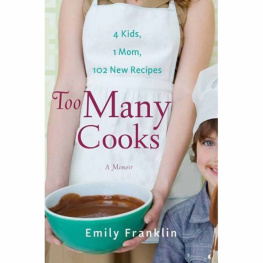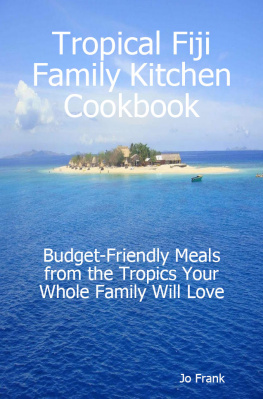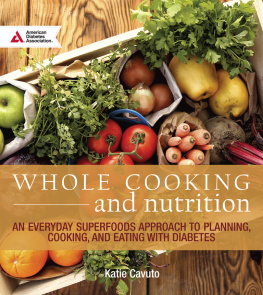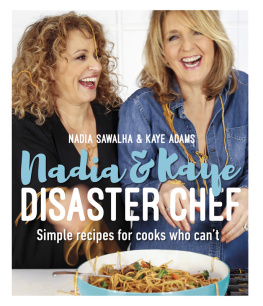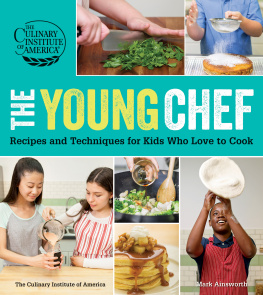
This book was born very simply out of two loves: food and children.
And not necessarily in that order.
I love food. I love kids. Well, to be fair, not all kids. I love mine, though. This is true with food, too. I love looking at food at the farmers market, peering at specialty stores, talking about food, shopping for food, reading about food, but I do not love eating all foodthough Im willing to try. Most of all, I like cooking food. And I like cooking it for my rather large family.
Not too long ago my husband and our four kids and I were out for dinner at a somewhat famous seafood restaurant. This restaurant was located, I should add, on an island known not only for its beaches and for its shells but for its great bounty of fish. Wed prepped the kids for the menu, done the parental reconnaissance mission of scouting out the goods before, and yet still their decry came.
Theres nothing to eat here.
Nothing consisted of scallops and soft-shelled crab, salmon and flounder and red snapper cooked in all manner of waysbreaded, fried, baked, broiled, encrusted with wasabi. Nothing went on to include shrimp, mussels, cod, and sole. The plasticky kids menu offered pizza and nuggets.
Even then with the harried waitress and the tourist masses and the sun-tired kids and the on-vacation-but-still-needing-a-vacation parents, we still said no to the pizza and nuggets.
Were at a fish restaurant! I insisted as the kids began to color on their menus with waxy crayons.
You dont have chicken at a fish restaurant, my husband, Adam, a pediatrician, agreed while detangling the youngest from her fork and asking the oldest not to use his as a musical instrument.
But what if we want nuggets?
Its a simple question. And yet the answer is more complicated and deserves a whole essay (which I give on Chapter 3: Blessed Be the Nugget).
You know what? Order whatever you want. I pointed to the big menu. From here. Then I said my piece. Try something new.
The reality is that just because I love food and like to try new things, doesnt mean my children will.
But I could try, which brought me to this question: What happens when you mix the mayhem of motherhood with new foods and recipes?
What happens when, as a family of six, we order from the full menu? Explore the new, the untasted, the untried, the unknown both in our home and out? For one whole year we would introduce new foods on a regular basis with the goal of broadening our culinary landscapes. Twelve months later wed see about the kids menus. I didnt announce with grandeur my plans to infiltrate our meals with newness. I didnt say our lives were going to change. They did, of course, but I didnt know this when I set out one night with a coconut and a hammer (more on Chapter 2: Milk Feeds More Than Just the Baby).
Too Many Cooks is not a cookbook, though it contains recipes. Rather than being a book solely about cooking, this is a narrative of family eating. My husband is a physician and hes got lots of literature about the health crisis affecting kids in this country, but this book is not about cooking rigidly healthy meals, though healthy ones are encouraged. Mainly, I dont have a platform. Im not here to lecture about local or organic or beef or sweets. This book documents the family fun, chaos, and conviviality that surround mealtime and food while introducing new meals, never-before-tasted vegetables or crackers, fish, fowl, and grains as I show my kids how to order off the other menu.
Too Many Cooks is an eating book.
Im not a terrific measurer. Im not an immaculate chef. But I make good food and can think on my feet, which comes in handy (think: stirring sweet-corn risotto while nursing and running through spelling words for the week after putting in work hours). Friends, relatives, and strangers at the market who see me shuffling through with four children often ask me, How do you do it?
Prior to my life as a writer and mother, I was a cook on historic yachts and luxury boats, cooking three meals and a high tea for crowds of up to forty people in a galley smaller than a shower stall. And with a diesel-fuel stove that ran at turns scalding or tepid. If I handled deveining shrimp, making lobster bisque, and creating chocolate pudding cake while caught in rough seas off the Maine coast, surely cooking in my own kitchen would be a lesser challenge. Right?
Not necessarily.
Too Many Cooks is a culinary calendar of days and seasons with my family. As with good food, I am happy to share these moments; the highs and lows of parenting in the kitchen. I can say that cooking for one whiny, picky child is far more difficult and stressful than for forty on the rolling seas. But I do it anyway.
I have long believed that cooking and parenting go hand in hand. Not only because children need food and one of the earliest ways we connect to them is by feeding, but because both are wonderful and messy. At their best, cooking and parenting bring joy, fulfillment, and pleasure. But a bad day in the kitchenor with a kidand frustrations (and often a bad taste in your mouth) abound. At the end of the day, you try your best with kids, give them everything you can, and see how they turn out at the end. Who hasnt done the same thing in the kitchen; closed their eyes, shut the oven door, and hoped that when the time comes to reveal the dish, its recognizable and good?
Too Many Cooks is my quest to create happy, healthy eaters without tricks (if you pure vegetables and add them to brownies, all youre really doing is getting your kids to like brownies, which they probably already do). So this is not about sneaking healthy food into sweets. In fact, this is not about sneaking anything. This is the oppositea bare-all. A culinary centerfold, if you will.
Back at the seafood restaurant, when the plea for nuggets went unanswered, the kids wound up with barbecued salmon, crusty cod, and shrimp. No pizza. Nix the kid menu. We endured the bitter battle for the first few minutes and then, when the plates came, we shared and tasted and tested. That was the beginning.
As a working parent, I know there is great variety to how people with children tend to cook: some in fits and starts, in snatches and on the run, some slow-cooking and bringing out recipes their own parents used. This book is not a judgment on how other people cook. I have friends who shop exclusively at organic markets and insist on local produce. I have others who dont give much thought to food, shopping at big chain stores and whose idea of cooking is pressing the Start button on the microwave.
But no matter how we cook or what food means to us, we need to feed our families. The kitchen is a microcosm of family life, and eating together is the most universal of gatherings. I want to teach my kids to explore new ideas and tastes. Some they will adore, others they will revolt against and hope never to have again, and some will just roll off their tongues but implant deep within their growing minds. Part of the reason for this book is the actual foodI hope theyll appreciate curries, recognize rhubarb, have opinions about onions and leeks, roasted cod, and fingerling potatoes. The other partthe biggest partis being together.

